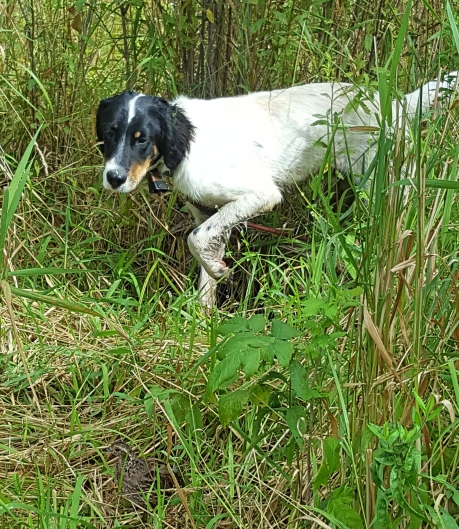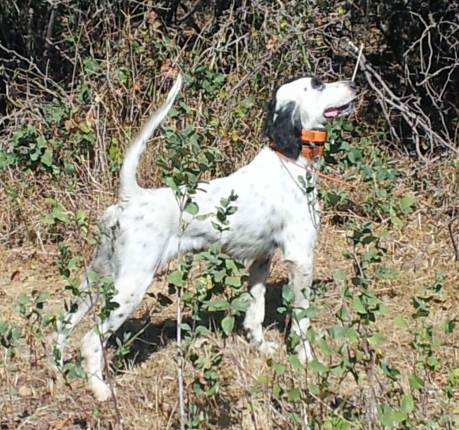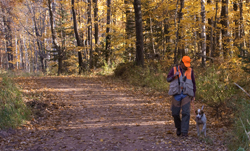Wild bird training and scenting

Puppy Jeter (Blue Riptide x Northwoods Chablis, 2017) had a nose-ful of scent before the quail flushed. But he won’t get that close to many wild birds!
Working young dogs on wild birds takes lots of time and effort. And since, in the end, the goal is to bring out their best and develop them into the best possible grouse dogs, then that commitment is worth it.
Why do wild birds take time and effort?
1. You have to know where to find wild birds.
2. You have to get up early or be there late in the day for the best chances.
3. You still might not find any birds.
4. If you do find birds, it might not be the right opportunity for the dog.
5. You can only work so many dogs in a day due, usually, to weather. It can be too wet, too dry, too hot, too stormy.
Whew! Many days I wish the same training could be accomplished on liberated birds in a 40-acre field. It would be easy but it just can’t be done.
For the past several weeks, I’ve been working several young dogs, varying in age from eight to 18 months, on wild sharp-tailed grouse. They find birds but haven’t pointed any. Yet when I train those same dogs on pen-reared chukars or quail, they find and point almost every bird.
What’s going on?

Her head held high, Northwoods Chardonnay (Blue Shaquille x Houston’ Belle’s Choice, 2009) is perfectly poised to capture just a wisp of sharptail scent on the North Dakota prairie.
While there are several differences between wild and put-out birds, I think the primary distinction is the amount of scent they emit. Put-out birds just smell more. While those birds work well to get young dogs started, eventually, the dogs need to focus on tiny wisps of odor that lead to a bird.
My analogy is that some dogs seem to be searching for a bucket of scent and others are looking for a thimble-ful. As far as I know, the only way for young dogs to learn about finding a thimble-ful is to work them on birds that provide just that small amount—wild birds!




